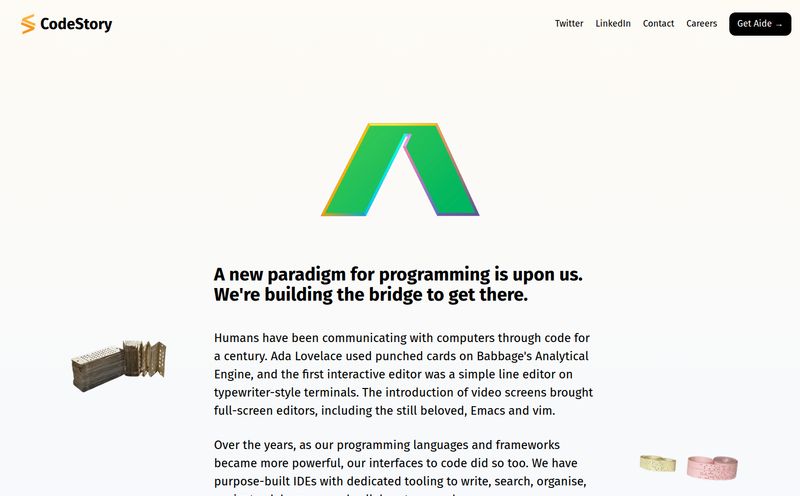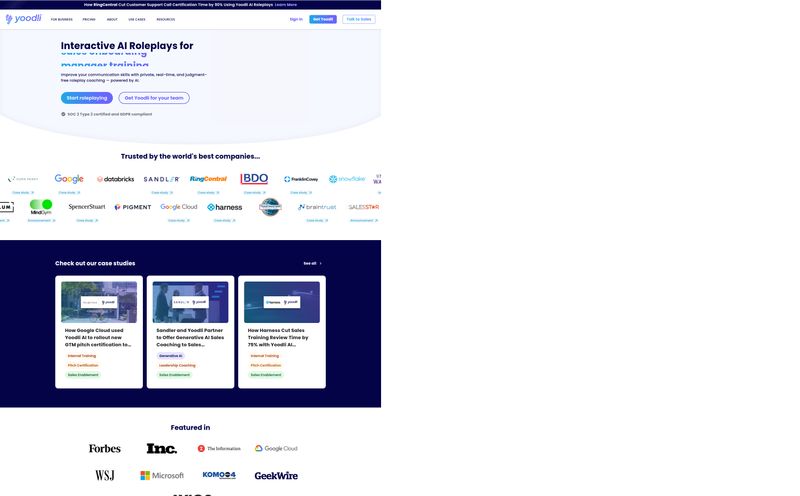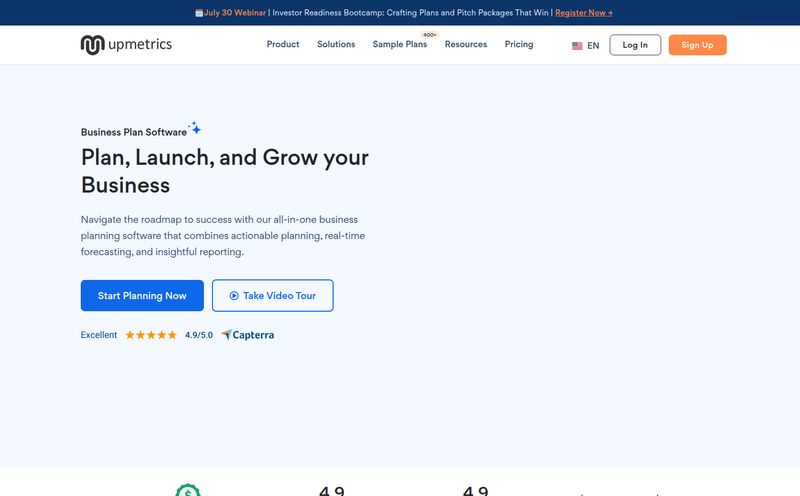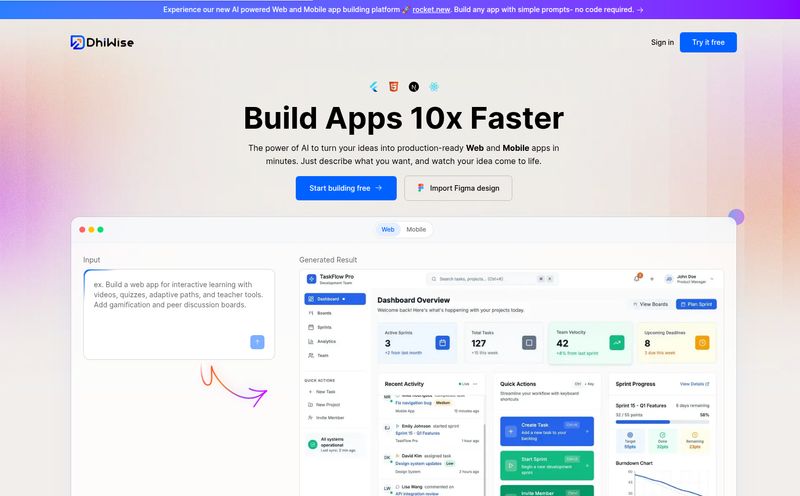How many times have you, a marketer, a PM, or a CEO, had a simple question about your business data, only to be told, "Sure, just put in a ticket for the dev team"? You know the drill. Your quick question goes into a backlog, sits there for a week, and by the time you get the answer, you've already moved on to the next fire. The data is right there, locked away in a database, guarded by the cryptic language of SQL.
It's a classic bottleneck. I've been there. I once waited four days just to get a list of user sign-ups from a specific campaign. Four. Days. It felt like trying to order a pizza by sending a message in a bottle.
This is the problem that a whole new breed of tools, powered by generative AI, is trying to solve. Enter QueryX, a platform that's been making some noise in the Text-to-SQL space. It promises to be a universal translator for your data, letting you just... ask questions. In plain English. Or French, or Spanish, apparently.
But does it live up to the hype? Or is it just another shiny AI toy that looks great in a demo but falls apart in the real world? As an SEO and traffic guy who lives and dies by data, I had to take a closer look.
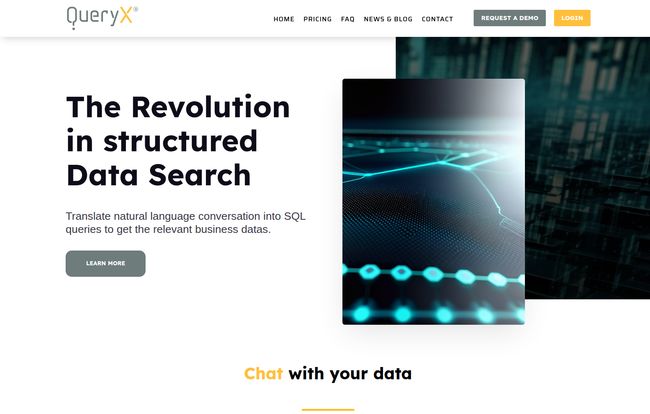
Visit QueryX
So, What is QueryX, Really?
At its core, QueryX is a Text-to-SQL tool. You talk to it, it talks to your database. You ask in your normal, everyday language, "How many customers from Germany bought Product Z in the last month?" and behind the scenes, QueryX translates that into the beautiful, structured query language that databases understand:
SELECT COUNT(customer_id) FROM orders WHERE product_name = 'Product Z' AND purchase_date >= '2024-05-01' AND customer_country = 'Germany';
Or something to that effect. The idea is to completely remove the SQL barrier, turning data analysis into a conversation. This isn't just about making things easier; it's about making data accessible to everyone in an organization, a concept we love to throw around called data democratization. It's about letting the people with the business questions get their own answers, fast.
Who is This Tool Actually For?
QueryX seems to be aiming at a few distinct groups, which I think is pretty smart. It's not a one-size-fits-all solution, but a co-pilot that adapts to the user.
For the Non-Technical Folks (Like Morgana the Director)
This is the primary audience. The department heads, the project managers, the C-suite execs. People like 'Morgana' from their use cases, who need to make data-driven decisions but have never written a line of SQL in their life. For them, QueryX is a godsend. It's a chat window where they can ask for KPIs, track inventory, or check on customer experience metrics without having to bother a single analyst.
For the SQL Pros (Like Elara the Analyst)
Okay, so what about the data analysts and developers who are already SQL wizards? At first, I was skeptical. Why would they need this? But the pitch here is about speed and efficiency. Instead of manually typing out complex, multi-line joins, an analyst like 'Elara' can use QueryX as a super-powered assistant. She can state the goal in plain language, get a solid 90% of the query written instantly, and then just tweak and refine it. It's about eliminating the grunt work, not replacing the expertise. It's an SQL co-pilot, and I can see the appeal.
For the Data-Driven Manager (Like Quentin)
Then you have the middle ground. The Customer Experience Manager, the Marketing Lead. People like 'Quentin' who are comfortable with data but maybe not deep in the SQL weeds. They need to pull weekly reports, track campaign performance, and monitor specific trends. QueryX allows them to be self-sufficient, asking follow-up questions and exploring data on the fly without needing to master the syntax for every database they touch.
The Features That Make It Tick
A tool is only as good as its features, right? QueryX has a few that caught my eye.
- The Chat Interface and API Access: It offers both a simple, user-friendly chat for direct questions and APIs for integrating its power into your existing software. This dual approach is great, catering to both direct human users and automated systems.
- Broad Database Support: The site claims it supports "all main database solutions." That's a big claim, but if true, it means you don't have to worry about whether it plays nice with your PostgreSQL, MySQL, or SQL Server setup.
- Multi-Language Magic: The ability to ask questions in languages other than English is a huge plus for global teams.
But here are the two features that I think are the real secret sauce: the Automatic Error Correction and the Confidence Rating Engine. This is where it gets interesting. The tool doesn't just generate a query and hope for the best. It apparently self-corrects its own code to improve accuracy. And the confidence rating? That gives you an idea of how sure the AI is about the query it just wrote. This is fantastic, as it helps manage expectations and tells a user when they might need to rephrase their question or get a second look from an expert.
The Good, The Bad, and The SQL
No tool is perfect. Let's get real. Based on my analysis and the info they provide, here’s my breakdown.
On the plus side, the speed and accessibility are undeniable. For teams without dedicated data analysts, this could be transformative. Giving everyone the power to query data is a massive win. The energy efficiency claim compared to "vanilla LLMs" is also a nice touch, especially for companies conscious of their computational footprint. And the built-in error correction is a genuinely thoughtful feature that shows they understand the pitfalls of AI-generated code.
However, let's look at the other side of the coin. The platform's performance hinges on how well you ask your question and how your database is configured. You can’t just mumble a half-formed thought and expect a perfect result. You might need to learn how to talk to the AI, rephrasing questions for better accuracy. A significant hurdle for some might be the requirement to provide your database structure in a JSON format. That's not exactly a "no-code" step and will likely require some initial technical setup. It's a classic case of "garbage in, garbage out" – the quality of your setup determines the quality of your results.
What's the Damage? A Look at QueryX Pricing
Ah, the pricing page. Or, in this case, the lack thereof. QueryX has a page titled "Simple Pricing," but it doesn't list any actual prices. Instead, it talks about its value propositions—Simplicity, Confidentiality, Accuracy, Scalability—and has a big "Get Started" button.
In the world of B2B SaaS, this almost always means one thing: custom pricing. You'll need to contact them, probably do a demo, and they'll give you a quote based on your company's size, usage, and specific needs. I dont mind this model, but it's not for everyone. If you're a small startup looking for a cheap, plug-and-play solution, this might not be it. This model is geared towards businesses that see a clear ROI and are willing to have a conversation about it.
My Final Take: Is QueryX a Revolution or Just an Evolution?
So, is QueryX the "revolution in data usage" it claims to be? I'd say it's a powerful step in the right direction. It's less of a violent overthrow and more of a really, really smart evolution of the BI dashboard.
It's not a magic wand. You still need a well-structured database and some sense of what you're asking. But it's an incredible bridge. It closes the gap between the people with the questions and the data with the answers. For organizations feeling the pain of the SQL bottleneck, QueryX could be the lever that finally gets things moving. It could free up countless hours for both your technical and non-technical teams.
If you're a data analyst, see it as a co-pilot that handles the boring stuff. If you're a manager, see it as your personal data assistant. If you're on the fence, I'd say it's definitely worth requesting a demo to see if it can speak your company's language.
Frequently Asked Questions about QueryX
- Is my data secure and confidential with QueryX?
- According to their site, confidentiality is a core pillar. B2B tools in this space live and die by their security protocols. You would definitely want to confirm specifics like data processing agreements and on-premise vs. cloud options during a demo, but they highlight it as a priority.
- How accurate are the SQL queries generated by QueryX?
- Accuracy depends on a few factors, including the clarity of your question and the quality of your database schema setup. However, QueryX builds in features like an automatic error corrector and a confidence score to help improve and verify the accuracy of its outputs.
- Can I ask follow-up questions to refine my results?
- Yes, the platform is designed to be conversational. You can ask follow-up questions to narrow down or expand on the data you've received, much like you would with a human analyst.
- What kind of databases does QueryX support?
- QueryX states it supports integrations with "all main database solutions," which typically includes popular relational databases like PostgreSQL, MySQL, SQL Server, and others. You'd need to confirm your specific stack with their team.
- Do I need to know any code to use QueryX?
- For the end-user asking questions in the chat interface, no coding knowledge is required. However, there is a technical setup step that involves providing the database structure, likely in JSON format, which will require someone with technical know-how.
Conclusion
In the end, tools like QueryX represent a significant shift in how we interact with business intelligence. By lowering the technical barrier, they empower more people to explore, question, and understand the data that drives their business. While it has its considerations—particularly around setup and the art of asking the right question—QueryX looks like a seriously powerful contender in the Text-to-SQL arena. It's a tool that could finally break down the walls around your data silo, and that’s an exciting prospect for any data-hungry professional.
